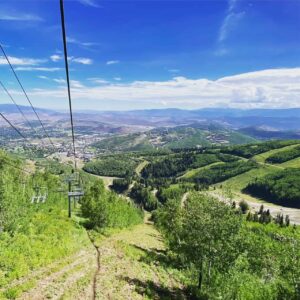Late US National Stage Entry

A late US national stage entry, from a PCT international application, is one way a US or international applicant can obtain patent protection in the US.
Patent applicants can seek patent rights outside their home country through a few mechanisms. For utility patent applications, applicants file either direct foreign applications in individual foreign patent offices or initiate a centralized international process. With direct filing, applicants use local counsel to file and examine the applications according to the local law. With the international process, a centralized PCT international application is filed, searched and examined under internationally-accepted rules, and is then sent to foreign offices where it can be processed according to the foreign country’s laws.
Deadlines govern the decisions and timing to file either directly or internationally. A PCT application must usually be filed within 12 months of a priority date, usually the date a first application was filed on the subject matter. There are methods for restoring a right of priority within a limited amount of time if that deadline is missed. However, those methods are limited and not always available.
PCT Applications
Once filed, the PCT application processes through an “international phase” in which it searched by an international searching authority, and a written opinion is developed. The written opinion determines whether the claims presented in the PCT application have met internationally-accepted standards for patentability. A report on patentability is eventually developed which is based either on that written opinion or on subsequent examination following the presentation of amendments or arguments in response to the written opinion.
The “international phase” of the PCT application ends 30 months from the priority date, and the “national phase” (also called the “national stage”) begins with the filing of national applications. This deadline is no less than 30 months, but in many countries it is 31 months, and some countries provide even more time under certain circumstances. An applicant looking for patent protection in foreign countries must file a foreign application in those countries before the expiration of each country’s respective deadline.
Missed National Stage Entry Deadline
In many countries, missing the national stage entry deadline is the end of the road, and you can no longer pursue a patent application in that particular country. In some countries, there may be exceptions. Canada, for instance, is unique in that provides an additional 12-month extension period when the delay is unintentional.
Late US National Stage Entry
The United States is perhaps one of the most gracious countries when it comes to missed deadlines.
In the US, if the deadline on a regular patent application is missed (say, the applicant failed to respond to a rejection), then the application will become abandoned. It can, however, potentially be revived. If the abandonment was unintentional, and the delay in filing a petition to revive accompanied the missed response was also unintentional, then the application can generally be revived (with payment of a hefty governmental fee). In some cases, there are additional requirements, and in other cases, the Patent Office may request more information about long delays, such as those over two years. However, there are means for reviving abandoned applications.
A wrinkle of PCT law enables a PCT application to enter the national stage late. Filing a PCT application will automatically constitute the designation of all PCT contracting states on that filing date. In other words, the effect of the international application is as if a national patent application were filed in each contracting state.
So, when a PCT application is filed, the application is also considered to have been effectively in each PCT member country. For the US, that means that a US application is considered to have been filed on the same day the PCT application was filed, even though a US application was not actually filed.
This means that the “US application” can go abandoned, which means it can be revived. If an applicant who has filed a PCT application misses its 30-month deadline for entering the national stage in the US, that deadline closes, and the application is considered abandoned as to the US. However, the US will allow it to be revived (again – revival is not always possible, it is subject to certain restrictions).
The US even has a form – PCT/SB/64PCT as of the time of this writing – that can be used in a petition to revive an international application. It is named the Petition For Revival Of An International (PCT) Application For Patent Designating The U.S. Abandoned Unintentionally Under 37 CFR 1.137(a) and includes a checklist of some of the minimum documents that need to be filed along with a such a request.
Any applicant reviving a PCT application for national stage entry into the US would be well advised to contact and hire an experienced patent attorney. A national stage entry on its own is a complicated process that requires a great deal of accompanying paperwork. Certain translations, priority copies, international records, and other documents must be submitted for a national stage entry. In addition, the Petition For Revival has another set of documents that must be furnished to support the request. And the government fees, which vary depending on the size of the applicant, the type of filing, and the results of the international application, are high and non-refundable.
If you have any questions about filing a patent application in the US late in the PCT process, or questions about PCT applications or US patent applications, please call patent attorney Tom Galvani today.
